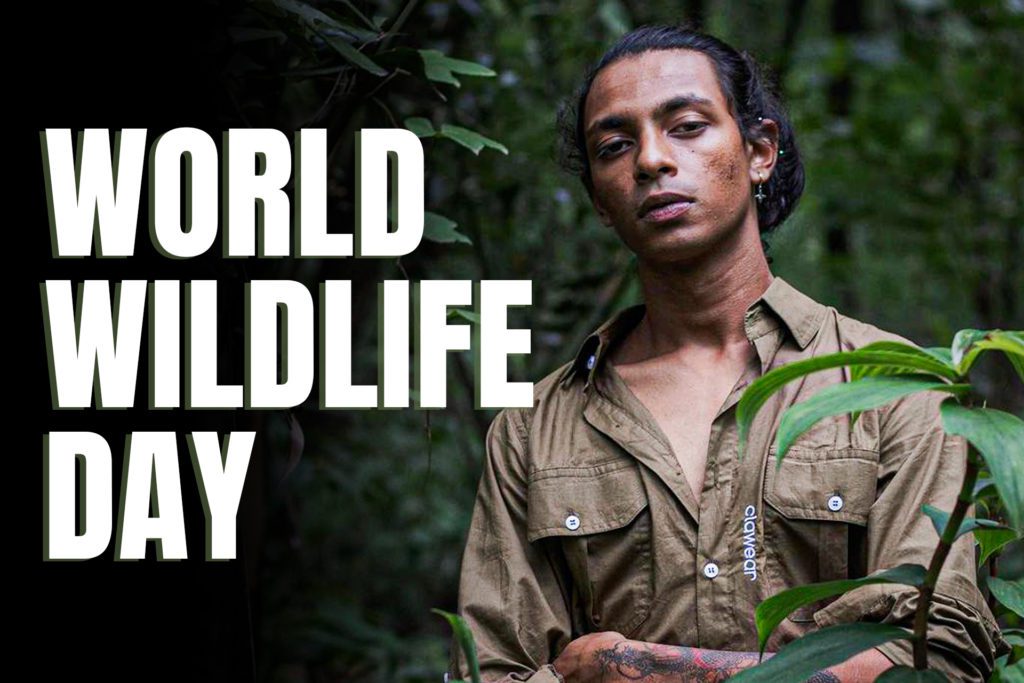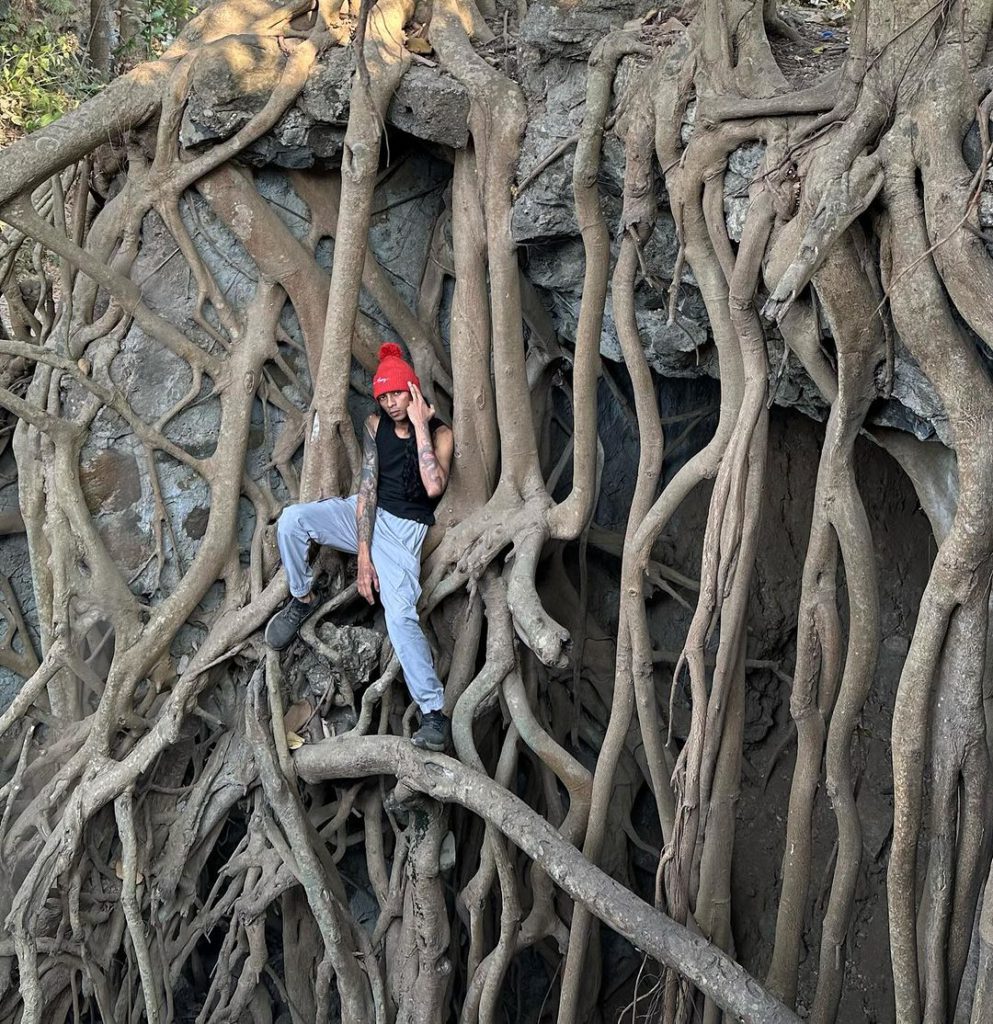India is said to be a bustling hub of flora and fauna and in India’s wilderness, amidst the rustling leaves and enchanting nature, there roams a modern-day Mowgli, Abhirup Kadam. Known as the ‘hottest Mowgli’ in the digital realm, Abhirup is not just a charismatic content creator but also a dedicated wildlife rescuer, advocate, and founder of the Maharashtra Animal Rescue Association (MARA). As the world celebrates World Wildlife Day, Social Nation had the privilege of delving into the life and mission of this remarkable individual who is a trailblazer in wildlife conservation and education.

With over a million subscribers on YouTube and a stellar 204K followers on Instagram, Abhirup utilises his platform not only to entertain but also to bust myths surrounding wildlife and enlighten the way to protect our planet’s precious wildlife.Wol
SN: Can you give us a glimpse of your childhood?
Abhirup: My childhood was one of the craziest periods. As a kid, I was an introvert. I had no toys but there were animals at my place, always. It could be an injured pigeon, a dog, a snake, a monkey, or any sort of animal.
My mom and dad always taught me to take care of animals, how to conserve nature, and how to respect animals. Maybe because of all these values and principles, I am doing what I do.
SN: What was your first encounter with a wild animal and how was that experience?
Abhirup: Frankly speaking, I don’t remember what was my very first wild animal encounter but my mom always tells me that I was three years old when I held a snake and that could be my first wild animal encounter. At that age, I did not even know if that thing was called a snake but there were many animals around me in the growing years and I feel super blessed about it.
SN: What encouraged you to work in the field of wildlife rescue?
Abhirup: Our Southeast Asian continent is blessed with flora and fauna. Our country has one of the world’s most beautiful natural resources, wildlife, and natural habitats. The things which are causing damage are the lack of knowledge, lack of awareness and the existence of misconceptions regarding wild animals or wildlife in general. This encouraged me to work for wildlife rescue and wild animals.
Also Read: “Primark” To Come To India? Reliance Industries Limited Is In Talks With The Brand
Every time we think about animals there is an image of a cute little pup with four paws but there are hardly any people who think about a slithering 18-foot-long snake, a giant leopard or a big 12-foot-long crocodile. As a result, the situation has worsened and it’s high time we save wild animals. If we don’t save them now, then after a couple of decades we can only see these animals in books, like we see dinosaurs and other extinct species.
SN: Did your family support you in this decision?
Abhirup: Yes, I am blessed to have a family like mine. My mom and dad are very supportive. I’ve faced a lot of crises- like snake bites, and many life-threatening situations which gets them concerned but they never fail to support me.

SN: Can you share some groundbreaking statistics on the number of extinct animals in India?
Abhirup: There are several animals, birds, reptiles, and amphibians, which have been extinct even during this last decade. In fact, every New Year, there is a species which is almost extinct. The habitat destruction is getting worse and that’s the main cause of wild animal extinction in India.
SN: What are some other reasons that lead to the extinction of a species?
Abhirup: Wildlife trafficking and wildlife trade is also a big issue because animals get killed for meat, for their skin, for their hair, and all of it. Due to these illegal hunting processes or illegal trading processes, animals are going extinct.
SN: What is one of the biggest challenges in wildlife management?
Abhirup: One of the biggest challenges in wildlife management is, first, to create awareness among people. Second, to conserve the habitat of a particular animal and third, to teach people how to coexist. Animals are never at fault because every animal is very adaptive. It is us humans who are rigid and are destroying the natural resources.
SN: Wildlife rescuing is not given the importance that it deserves, can you explain the difficulties you face daily?
Abhirup: People take wildlife for granted. They think that it’s just a tree or it’s just a snake and it’s fine for them to not survive. The problem that I face daily is there is still a lack of awareness among people. For instance, if I tell people that I snake rescue, they imagine that I carry a pungi or a bin with me like Amrishpuri. People have no idea how it’s actually done, and why it needs to be done.

SN: What does a day in your life look like?
Abhirup: My day is super happening and every day is different. I meet tons of animals and tons of humans with different mindsets, with different perspectives towards life. It starts with a rescue and ends after releasing or relocating an animal. It is tiring, but I love doing it.
SN: Can you briefly explain the process of wildlife rehabilitation?
Abhirup: Wildlife rehabilitation differs from species to species. The animals that need to be rehabilitated are animals that are injured or those who are not fit to be released into the wild.
During the process of rehabilitation, the main concern we face is to make sure we are not taming the animal. There is a thin line between creating bonds and making sure they continue to be fit to live in the wild. Once the animal is fit, the process of re-location occurs. We see to it that the animal doesn’t get into rehabilitation for a long period because it becomes a bigger task for an animal to shift from its territory into the wild.
SN: Can you also talk about the work that M.A.R.A. does and your contribution to it?
Abhirup: M.A.R.A is a nonprofit organisation that has students and volunteers who want to help nature. For a decade now, it has been associated with the Maharashtra Forest Department and works towards wildlife rescues, relocation, and rehabilitation. I am the CEO of the company.
With M.A.R.A we aim to create awareness among humans and reduce the chances of human-animal conflict. We also work to conserve the wild animals and the flora around us.
SN: Can you share some myths that surround wildlife?
Abhirup: There are a lot of myths about animals. The most popular ones are that snakes drink milk or animals take revenge. The belief in the existence of Nagmani and Vishkanya is also very common. There are several factors responsible for it including Bollywood. Nowadays, we do see good films and documentaries that show the real side of wildlife. The problem is that these myths are one of the main threats to wildlife and spreading information is the only way out.
SN: Which is that one animal that you haven’t encountered but would love to?
Abhirup: There are many animals that I haven’t encountered because I have only worked in India and haven’t seen the animals on the other side of the globe. Naming a particular species would be unfair but I wish to see every animal that exists on this planet till my last breath.
As we conclude our special interview on this World Wildlife Day, the conversation with Abhirup Kadam has touched our hearts and minds. As we look towards the future, let us follow Abhirup’s call to action, to stand as stewards of the natural world, to protect and preserve the diverse array of species that share our planet. For in our collective efforts lies the key to ensuring a harmonious coexistence between humanity and the wild.


